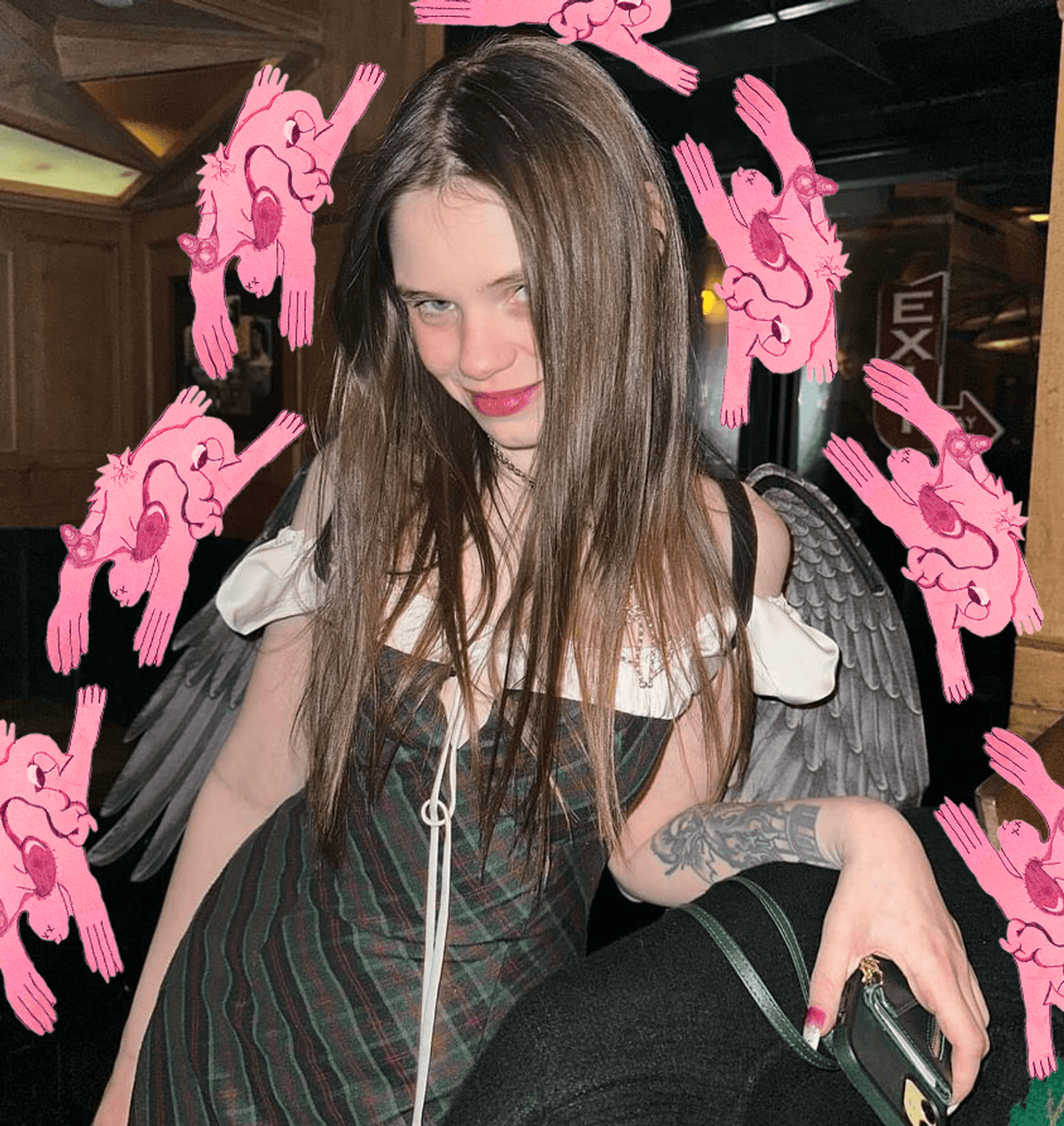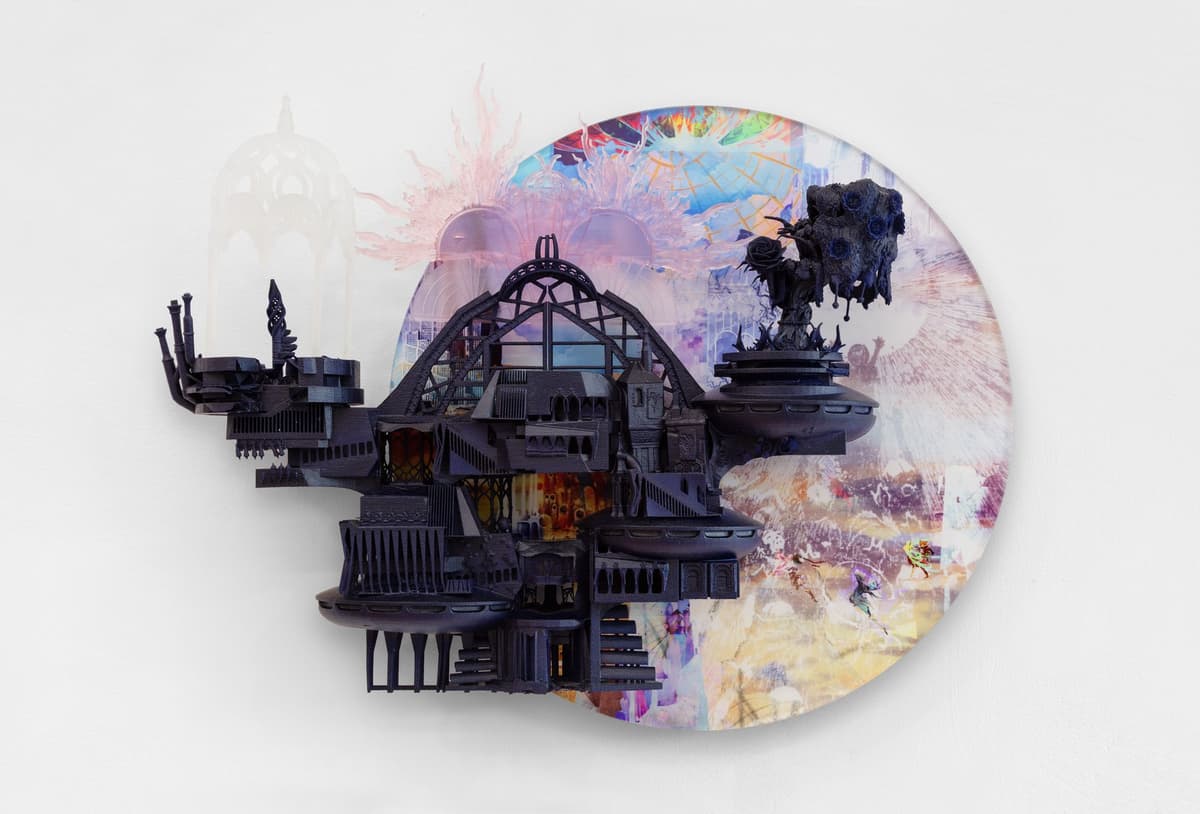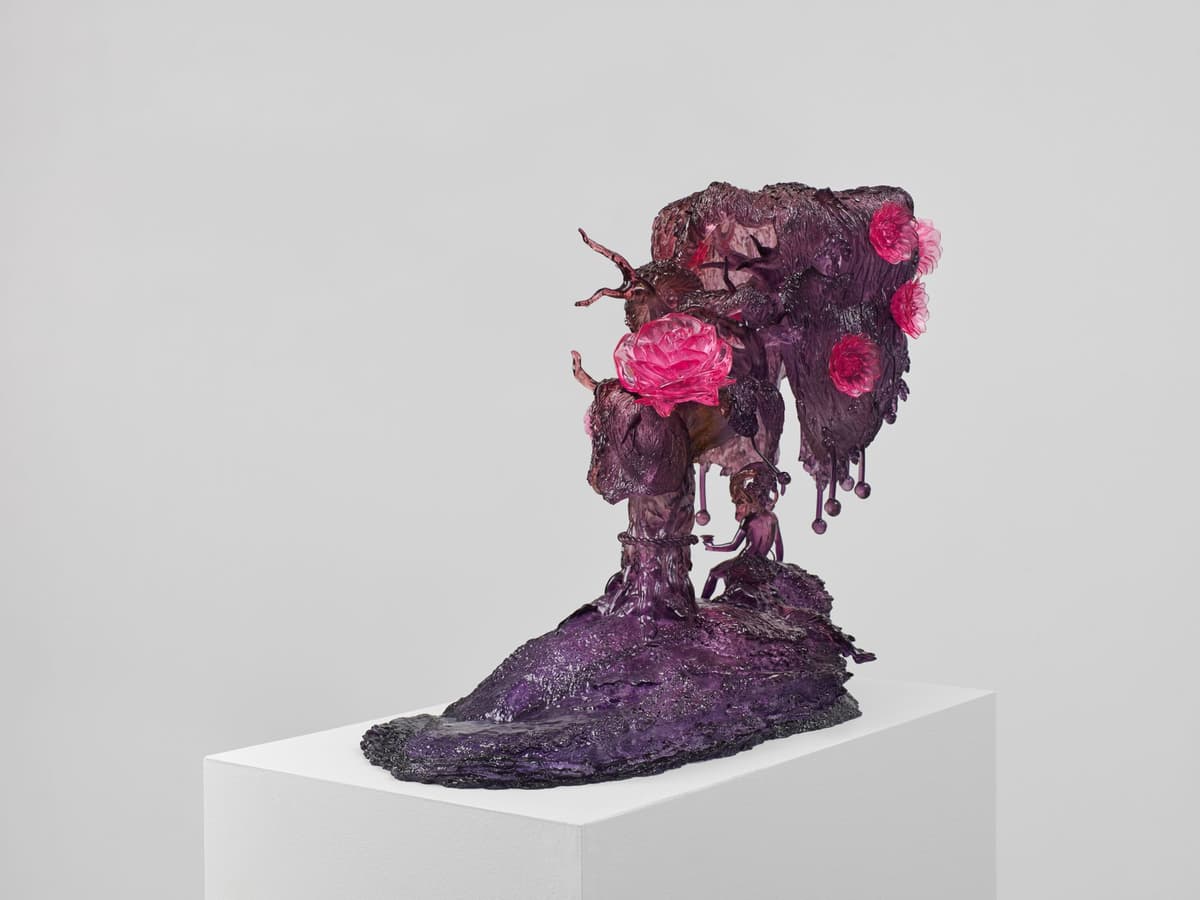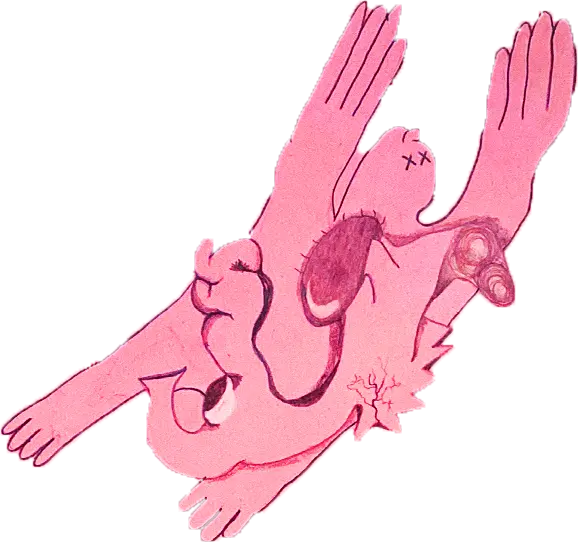SURREALISM AND THE EMPTY SPACE
Genevieve Goffman

I mostly pull [inspiration] from my own dreams of fantasy and anime. But my mom is a Renaissance historian, so I also use research and symbols from that period to figure in my work.
TESS POLLOK: There’s a lot to talk about here. You have a new show opening at Espace Maurice in Montreal on March 23 along with an accompanying novella, The Triumph of a Lonely Place. I definitely want to talk about the show but first I wanted to ask about your work in general. You use collage elements to create fantasy worlds that draw on historical references, mythology, and the aesthetics of anime and contemporary girlhood and pop culture. Are you into high fantasy in real life? What attracted you to fantasy worlds as a concept?
GENEVIEVE GOFFMAN: It’s funny to me that people relate my work to fantasy and mythology because I never intended to be categorized that way. When I started making art, there was this idea that art had to be taken extremely seriously, be highly academic, and also be highly personalized and individualized. I was searching for a language I felt comfortable with and that turned out to be the language of fantasy and of fantasy worlds. I still do pull a lot from research of historical narratives in my work, but I never set out to be a fantasy artist–I see myself as a collage artist working in iteration and repetition within a fantasy language. I think the fantasy element lets me talk about serious subjects or subject matter that might be perceived as more distant or loaded if done more seriously. It allows me more room for symbolic play.

POLLOK: What were you watching and consuming growing up that made you obsessed with fantasy?
GOFFMAN: I loved Philip Pullman, The Amber Spyglass series was huge for me when I was younger. A lot of Garth Nix. Anime has also just had a huge impact on my life. I love Madoka Magica, that anime in particular has had a significant and profound influence on my work. I like anime and manga that take the girl experience and kind of turn it on its head, like Serial Experiments Lain or Witch Hunter Robin. I like all the fantasy deep cuts as well, like Earthsea and Ursula K. Le Guin in general. I also love cosplay culture and steampunk, and these niche internet aesthetics, especially with reference to my fashion, like, I love when kids are into “dark academia” and have pinterest boards about it.
POLLOK: I wanted to ask you about the difference between fantasy and dreams–do you see a difference? Is there a difference between them that’s essential to understanding what you’re doing?
GOFFMAN: I think fantasy is more critical to understanding my work. Architecture also plays a huge role. Over time, as I started developing my practice more, I started to leave the fantasy world-building space and step into the surreal a lot more. I use digital 3D printing where aspects of material fabrication are easy to reproduce and I build from there. But that architectural component definitely gives things a dream-like quality, especially when I’m playing with buildings that almost exist or are almost there, but not quite. I see what I’m doing more as walking through the closet into Narnia, you know, into a surreal universe.
POLLOK: What about your new book, The Triumph of a Lonely Place? It relates to your new exhibition, as well.
GOFFMAN: It’s yet another surreal world I’ve created. I made this body of work about two years ago based around a story I made up. Basically what happened is that Espace Maurice reached out to me about doing a show and acknowledged that working at a smaller, newer gallery might be too expensive for me, especially since I don’t have a huge collector base yet, so they offered to fund an art book if I would share it with them. So it just sort of worked out because I’ve had this story in my head for two years and now I’m being offered a book deal. I just knew, instantly, that if I sat down and wrote it that I could make this fantasy short story. It’s playing on similar themes of a dream world. The theme is kind of the acceptance or rejection of isolation and empty space. It’s also kind of about wilderness and openness being offered as opposed to seclusion and privateness. So that’s what’s explored in the book and also in the three pieces I have in the upcoming show: escape from escapism, escape from isolation, and the perils that come along with that. The book itself is called The Triumph of a Lonely Place because it’s sort of a Catcher in the Rye coming-of-age story about someone growing up in a very lonely time, in a very lonely place, and their choice to step out of that and reject that.
POLLOK: That’s really interesting. What made you want to work with loneliness?
GOFFMAN: I guess the show and the book are both a little more personal to me. I was trying to think about myself more and be more self-reflective. I was also trying to tie it in with architecture, which has always been hugely important to my work–trying to think of architecture as something that is at once a communal space and also an individualizing and isolating space. The private and enclosed space of architecture represents isolation versus these large, wild, and open spaces that are like a chaotic place beyond the wall. That’s a big fantasy trope, going beyond the wall into the fantasy world.

POLLOK: Do you ever feel, especially when things like Madoka Magica are such an influence on your imagination, that there’s something of girlhood in your work?
GOFFMAN: I was joking recently that I’m a feminist artist, which I’m really not. But in certain contexts I can be. I did do an entire installation on girlhood, once. I like girlhood. It’s a bit of a costume or cosplay of its own. In general, art is infantilized–it’s very infantilizing to be constantly put in your place the way you always are as an artist. So there’s something infantilizing about being a woman and there’s also something infantilizing about being an artist. I think my relationship to femininity is pretty tongue-in-cheek. But there’s a joy and exuberance to girlhood that I really enjoy. There’s an excitement to playing that character, and if there has to be a political message to it, it should be a political message of celebration and something to find joy in. I’m currently in a group show at Petzel Gallery called Dungeons and it’s about dungeon-crawling in the context of multiplayer games, and I’m the only woman artist. I jokingly refer to my work in that show as a “feminist intervention.” It’s not like the show is aggressive or anything, but it’s very overtly masculine, and the piece I made was a delicate object, this woman-bird-horse creature in a cage–and I really wasn’t thinking about it in terms of femininity or women at all, but it did end up standing out in a notably feminine way. It made me realize that sometimes I am making feminine work, even when I don’t realize it.
POLLOK: What artists inspire your work?
GOFFMAN: It’s funny, I never really pull that much from other visual artists. Again, I mostly pull from my own dreams and visions of fantasy and anime. One big influence on me is that my mom is kind of a Renaissance Florence art historian, so a lot of my use of symbols is something I’ve taken from her research that went into my work at that period. I think the religious symbolism of that place and era is something I rehash a lot with my work. Most of my inspiration comes from architecture and narrative-driven art. A lot of architectural points of reference are of interest to me, I did a large installation recently that pulled directly from Adolf Loos and the architecture of Red Vienna.
POLLOK: And who are some of your peers and contemporary artists working today that inspire you?
GOFFMAN: I pull a lot from my close friend group. Karrine Smith is an artist I went to Yale with and she’s someone whose work I really respect, she’s had a huge influence on me and I feel very close with her.
POLLOK: How did you develop your practice over time? Where did you go to school?
GOFFMAN: I went to Reed College for undergrad and I kind of fell into art-making. I originally wanted to major in History or maybe English, and then a huge influence on me was this professor Sara Gilbert who ended up pushing me into Studio Art. She helped me experiment with cast-making and duplicating objects, which ended up with me contemplating repetition and object duplication in the context of art. That was really where I learned to see art-making as maybe the repetition of this very laborious task that you repeat over and over again until the project is layered enough that it feels complete. I invented this project in college where I would record every single person I talked to for 24 hours, or I would write down every single word I heard that day and make a project out of that. It started off very data-based and repetition-based. So that was really the beginning of where my practice came from. It was the idea of being able to sit down and do a really repetitive, laborious project–I intuited that from her. Maybe you have to work for eight hours at a time, you know, to make something feel right. But that’s just what you have to do.

POLLOK: And do you have any advice for artists who are struggling to build their practice right now?
GOFFMAN: Just do it. Don’t create obstacles for yourself. Don’t think that things have to be done in a specific way or you can’t do them at all. If you’re extremely depressed and all you can do is make art on the computer from your bed, just do that. If you can’t get out of bed, make it in bed. Just do it.
Genevieve Goffman is an artist based in New York City. Her upcoming solo show is in Montreal at Espace Maurice on March 23 and an accompanying novella, The Triumph of a Lonely Place, is available now. Her work is also currently showing at Petzel Gallery and Blade Study.
Tess Pollok is a writer and the editor-in-chief of Animal Blood.
All images courtesy Genevieve Goffman.
← back to features
